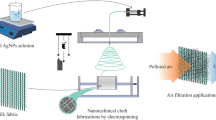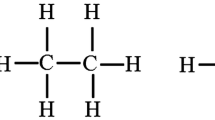Abstract
Surfactant-Polymer (SP) formulation is a crucial part when dealing with SP flooding. Different formulations using different types and concentrations of combination of surfactant and polymer result in different interfacial tension (IFT) and viscosity obtained and it will affect the amount of oil recovered. Salinity also affects the efficiency of SP flooding. High salinity causes polymer viscosity reduction and optimal salinity results in low IFT. This research is conducted to design SP formulation, select an optimum SP formulation by core flooding tests and to determine the effect of salinity (NaCl) variations towards optimum SP formulation. Nine different SP formulations in constant salinity are designed by using different concentrations of Hydrolized Polyacrylamide (HPAM) and anionic surfactant (Alpha Olefin Sulfonate-AOS). The formulations were characterized in terms of viscosity and IFT. Artificial heterogeneous porous media were used in core flooding tests and only six SP formulations with lowest IFT value were tested. Three different salinities were used for optimum SP formulation with maximum incremental oil recovery after water flood to determine the effects of salinities on polymer viscosity, surfactant IFT, incremental oil recovery after water-flood and also phase behavior. For combination of HPAM and AOS in SP flooding, IFT was only affected by the concentration of surfactant used whereas viscosity is solely dependent on polymer concentration. Core flooding tests performed in heterogeneous porous media shows that there exist an optimum polymer viscosity and surfactant IFT in SP flooding which can maximize incremental oil recovery and increasing in salinity also results in poor incremental oil recovery.

Similar content being viewed by others
References
Wang, Y.; Zhao, F.; Bai, B.: Optimized surfactant IFT and polymer viscosity for surfactant-polymer flooding in heterogeneous formations. In: SPE Improved Oil Recovery Symposium 2010, Society of Petroleum Engineers, Tulsa (2010)
Aluhwal, O.K.H.: Simulation study of improving oil recovery by Polymer Flooding in a Malaysian Reservoir. In: Department of Petroleum Engineering, Universiti Teknologi Malaysia, p. 212, (2008)
Zolotukhin A.B., Ursin J.R.: Introduction to petroleum reservoir engineering. Norwegian Academic Press, Høyskoleforlaget (2000)
Nasr-El-Din, H.A.; Taylor, K.C.: Rheology of water-soluble polymers used for improved oil recovery, Chap 24. In: Nicholas, P.C. (ed) Advances in Engineering Fluid Mechanics: Multiphase Reactor and Polymerization System Hydrodynamics. Gulf Professional Publishing, Burlington, p. 615–668, (1996)
Ryles R.G.: Chemical stability limits of water-soluble polymers used in oil recovery processes. SPE Reserv. Eng. 3(1), 23–34 (1988)
Sharma, A.K.; Pithapurwala, Y.K., Shah, D.O.: Selection criteria and formation of a surfactant slug for high-temperature, moderate salinity reservoir conditions. In: SPE Oilfield and Geothermal Chemistry Symposium. 1983 Copyright 1983 Society of Petroleum Engineers, Denver (1983)
Healy R.N., Reed R.L., Stenmark D.G.: Multiphase Microemulsion Systems. Soc. Petroleum Eng. J. 16(3), 147–160 (1976)
Sun, Y.; Saleh, L.; Bai, B.: Measurement and impact factors of polymer rheology in porous media. In: Vicente, D.J.D. (ed) Rheology, InTech., p. 187–202 (2012)
Lee, S., et al.: Development of a comprehensive rheological property database for EOR polymers. In: SPE Annual Technical Conference and Exhibition. Society of Petroleum Engineers, New Orleans (2009)
Hongyan, W., et al.: Development and application of dilute surfactant–polymer flooding system for Shengli oilfield. J. Petroleum Sci. Eng. 65(1–2), 45–50 (2009)
Li H.-B.: Advances in alkaline-surfactant-polymer flooding and pilot tests. Science Press, China (2007)
Kang W.-L.: Study of chemical interactions and drive mechanisms in Daqing ASP flooding. Petroleum Industry Press, Beijing (2001)
Pope G.A. et al.: The effect of several polymers on the phase behavior of micellar fluids. Soc. Petroleum Eng. J. 22(6), 816–830 (1982)
Nelson, R.C.: Further studies on phase relationships in chemical flooding. In: Shah, D.O. (ed) Surface phenomena in enhanced oil recovery, Plenum Press, New York, p. 73–104 (1981)
Szabo, M.T.: An evaluation of water-soluble polymers For secondary oil recovery—Parts 1 and 2. SPE J. Petroleum Technol. (5), p. 553–570 (1979)
Tabary, R., et al.: Design of a surfactant/polymer process in a hard brine context: a case study applied to Bramberge reservoir. In: SPE EOR Conference at Oil and Gas West Asia. Society of Petroleum Engineers, Muscat (2012)
Shiau, B.J.B., et al.: Designing alcohol-free surfactant chemical flood for oil recovery. In: SPE EOR Conference at Oil & Gas West Asia. 2010, Society of Petroleum Engineers, Muscat (2010)
Bataweel, M.A.; Shivaprasad, A.Y.; Nasr-El-Din, H.A.: Low-tension polymer flooding using amphoteric surfactant in high salinity/high hardness and high temperature conditions in Sandstone Cores. In: SPE EOR Conference at Oil and Gas West Asia. Society of Petroleum Engineers, Muscat (2012)
Winsor P.A.: Solvent properties of amphiphilic compounds. Butterworths Scientific Publications, London (1954)
Goodlett, G.O., et al.: The role of screening and laboratory flow studies in EOR process evaluation. In: SPE Rocky Mountain Regional Meeting. 1986 Copyright 1986, Society of Petroleum Engineers, Billings (1986)
Gao, P., et al.: Integrated evaluation of surfactant-polymer floods. In: SPE EOR Conference at Oil & Gas West Asia. 2010, Society of Petroleum Engineers, Muscat (2010)
Taber, J.J.; Martin, F.D.; Seright, R.S.: EOR screening criteria revisited Part 2: applications and impact of oil prices. SPE Reserv. Evaluation Eng. (3), p. 199–206 (1997)
Sheng, J.J.: (2011) Introduction, in modern chemical enhanced oil recovery, Chapt 1. Gulf Professional Publishing, Boston, p. 1–11 (2011)
Lake, L.W.: Enhanced oil recovery.: Englewood Cliffs, N.J. : Prentice Hall. p. 550 (1989)
Lenk, R.S.: A generalized flow theory. J. Appl. Polymer Sci. 11(7), p. 1033–1042 (1967)
Buchgraber, M., et al.: The displacement of viscous oil by associative polymer solutions. In: SPE Annual Technical Conference and Exhibition., Society of Petroleum Engineers: New Orleans (2009)
Unsal, E., et al.: Solution properties of mobility control Polymers. In: SPE Eastern Regional Meeting. 1977 Copyright 1977, American Institute of Mining, Metallurgical, and Petroleum Engineers, Inc., Pittsburgh (1977)
Abdul, A.; Gibson, T.; Rai, D.: Selection of surfactants for the removal of petroleum products from shallow sandy aquifers. Ground Water 28(6), p. 920–926 (1990)
Sheng, J.J.: Chapter 9—Surfactant-Polymer Flooding. In: Modern Chemical Enhanced Oil Recovery., Gulf Professional Publishing, Boston. p. 371-387 (2011)
Nasr-El-Din, H.A.; Hawkins, B.F.; Green, K.A.: Viscosity behavior of alkaline, surfactant, polyacrylamide solutions used for enhanced oil recovery. In: SPE International Symposium on Oilfield Chemistry. 1991, Anaheim (1991)
Zhenquan, L., et al.: A successful pilot of dilute surfactant-polymer flooding in shengli oilfield. In: SPE Improved Oil Recovery Symposium. 2012, Society of Petroleum Engineers: Tulsa (2012)
Yuan, S., et al.: Effects of important factors on Alkali/Surfactant/Polymer Flooding. In: SPE International Oil and Gas Conference and Exhibition in China. 1998 Copyright 1998, Society of Petroleum Engineers Inc.: Beijing (1998)
Author information
Authors and Affiliations
Corresponding author
Rights and permissions
About this article
Cite this article
Supee, A., Idris, A.K. Effects of Surfactant-Polymer Formulation and Salinities Variation Towards Oil Recovery. Arab J Sci Eng 39, 4251–4260 (2014). https://doi.org/10.1007/s13369-014-1025-7
Received:
Accepted:
Published:
Issue Date:
DOI: https://doi.org/10.1007/s13369-014-1025-7




